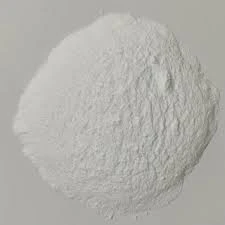Cationic Polyacrylamide Flocculant An Overview
Cationic polyacrylamide, commonly referred to as cationic PAM, is a synthetic polymer widely recognized for its flocculating properties in various industrial applications. As a water-soluble polymer, it plays a crucial role in processes that require the aggregation of particles in suspension, including water treatment, paper manufacturing, and textile processing. This article delves into the characteristics, mechanisms, applications, and advantages of cationic polyacrylamide flocculants.
Characteristics of Cationic Polyacrylamide
Cationic polyacrylamide is synthesized through the polymerization of acrylamide and a cationic monomer, resulting in a highly branched structure. The presence of positively charged amine groups makes it effective in destabilizing negatively charged colloidal particles in suspension. This positive charge enhances the interaction between the polymer and the particles, facilitating their aggregation and eventual sedimentation.
Cationic PAM is available in various molecular weights and charge densities, allowing for flexibility in formulation based on specific industrial needs. The molecular weight significantly influences its flocculating efficiency, with higher molecular weight polymers generally offering better performance in particle aggregation.
Mechanism of Flocculation
The flocculation process initiated by cationic polyacrylamide involves a combination of adsorption and bridging mechanisms. When introduced to a suspension, the cationic charges on the polymer interact with negatively charged particles, neutralizing their surface charges. This charge neutralization is critical as it allows particles to overcome their natural electrostatic repulsion.
Once the particles are neutralized, the polymer chains extend and act as bridges between these particles, effectively linking them together into larger aggregates or flocs. These larger flocs can then be easily removed from the suspension through sedimentation or filtration. The efficiency of cationic flocculants in this process is influenced by factors such as dosage, pH, and temperature, necessitating optimization for different applications.
Applications of Cationic Polyacrylamide
Cationic polyacrylamide flocculants are employed across diverse industries due to their effectiveness in various applications
1. Water Treatment In municipal and industrial wastewater treatment, cationic PAM is used to remove suspended solids, organic matter, and other impurities. Its ability to aggregate colloidal particles significantly enhances the efficiency of sedimentation and filtration processes.
cationic polyacrylamide flocculant

2. Paper Industry Cationic PAM is used in the paper production process to improve retention of fibers and fillers, increase dewatering rates, and enhance sheet formation. This not only improves paper quality but also reduces production costs.
3. Textile Processing In textile manufacturing, the flocculant aids in removing dye particles and other contaminants from wastewater, promoting environmental sustainability.
5. Oil and Gas Industry In drilling operations, cationic flocculants help stabilize drilling muds and increase the efficiency of solid-liquid separation.
Advantages of Cationic Polyacrylamide
The use of cationic polyacrylamide flocculants provides numerous benefits
- High Efficiency Due to their ability to effectively aggregate particles, cationic PAMs display superior performance compared to traditional flocculants. - Versatility The polymer is suitable for a wide range of applications, making it a valuable additive across various industries.
- Environmental Benefits Cationic PAM contributes to reducing the environmental impact of industrial processes by minimizing waste and enhancing the quality of effluents.
- Cost-Effectiveness The increased efficiency in processes can lead to reduced costs in terms of energy consumption, raw materials, and waste management.
Conclusion
Cationic polyacrylamide flocculants are essential components in various industries, providing effective solutions for particle aggregation and water treatment challenges. Their unique characteristics, coupled with a wide array of applications, highlight the significance of cationic PAM in advancing industrial processes toward sustainability and efficiency. As regulations on wastewater discharge become increasingly stringent, the demand for effective flocculants like cationic polyacrylamide will continue to grow, ensuring cleaner water and more sustainable practices in various sectors.

